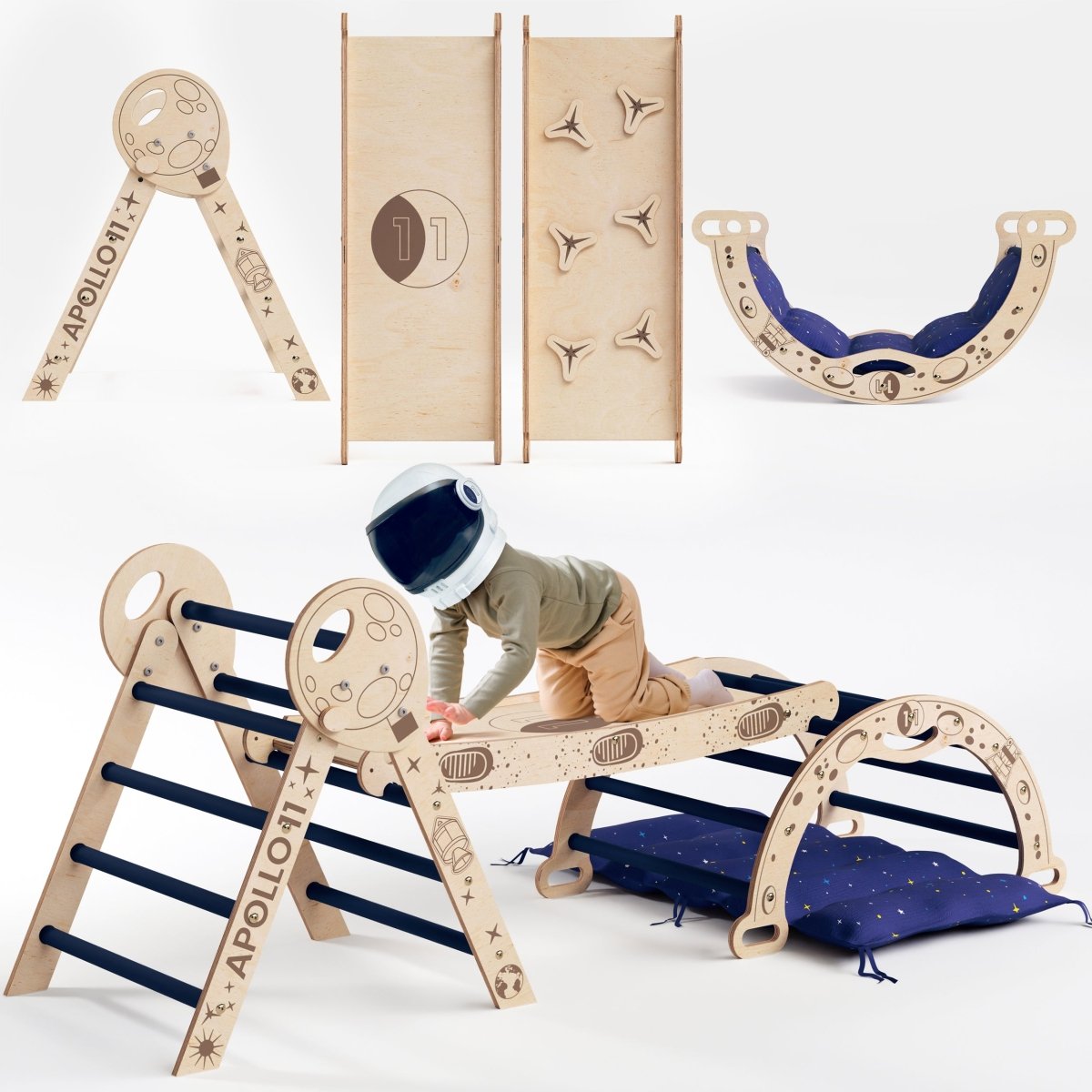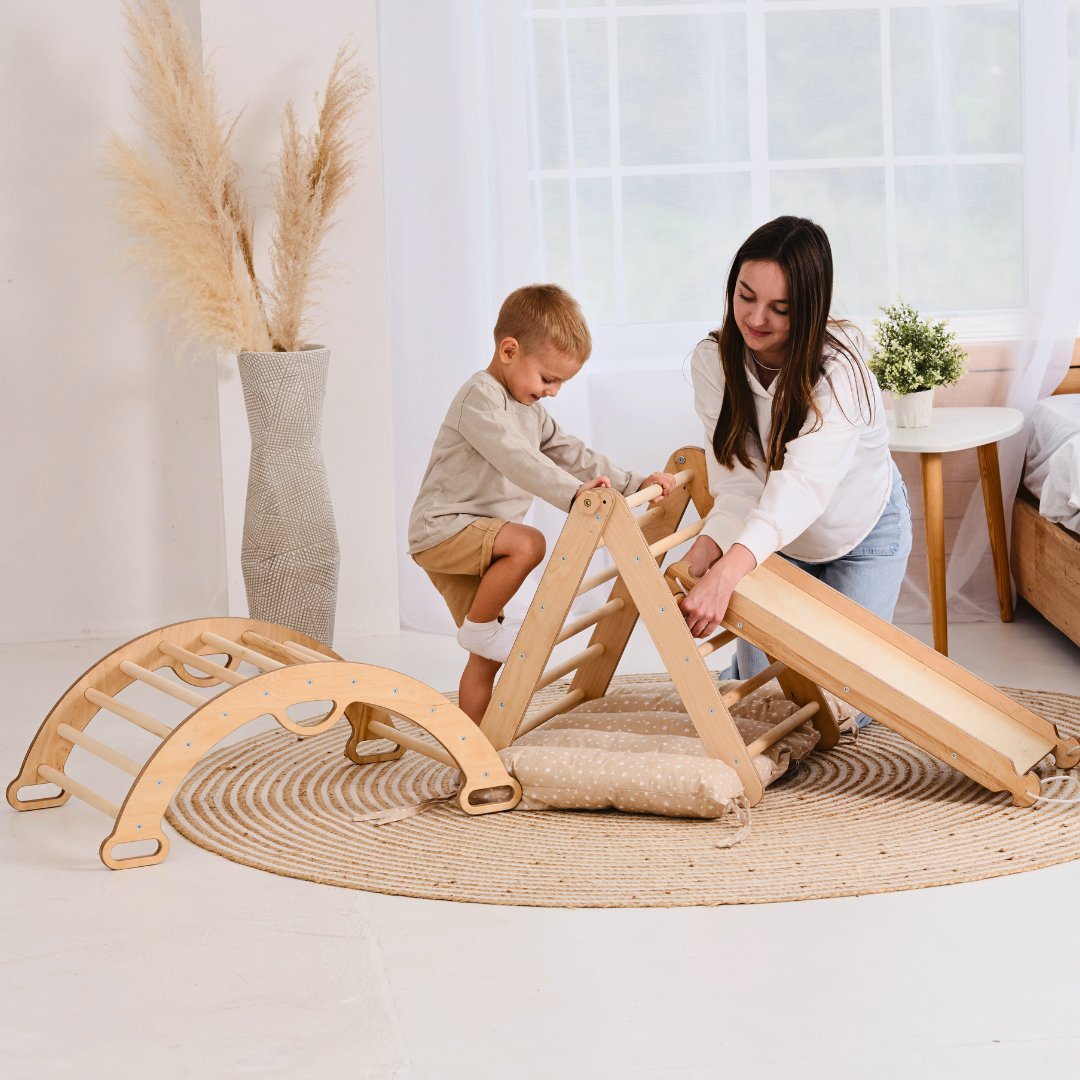Who is Maria Montessori: biography, methodology and interesting facts
It is not true that I invented what is called the Montessori Method... I have studied the child; I have taken what the child has given me and expressed it, and that is what is called the Montessori Method – Maria Montessori
Maria Montessori's method is now being talked about in almost every corner of the planet. Montessori toys for kids have flooded the market, and more and more kindergartens and schools use her method. However, many parents still do not know what it is or do not fully understand the method and its nature. This educational project was a true breakthrough for Maria Montessori, but it is important to note that at that time, no similar educational institution or curriculum existed. The scientist created this program independently with the help of practical experiments; the events that happened in her life significantly influenced the development of the groundbreaking educational method.
Childhood and education
Maria Montessori was born in 1870 in the Italian city of Chiaravalle in the family of the inspector of the Ministry of Finance, Alessandro Montessori, and Renilde Stoppani, the niece of the famous Italian geologist, Antonio Stoppani. Those times were not very favorable for society. Even despite the active events of the Risorgimento period, the majority of the population still suffered from poverty and illiteracy.
Only in 1877, a law was passed in Italy, according to which primary education became compulsory for both men and women, which did not radically change the situation, as many parents continued to send their children to work in the fields or mines.
Little is known about Maria Montessori's childhood. Most of what has been recorded about her early years are stories told by her devoted followers.
When it was time for Maria to go to school, her family moved to Rome because of her father's work. At the age of 6, she was enrolled in the first grade of the Via di San Nicolo and Tolentini public school. In Rome, she could get a better education than if she went to school in the provinces; the whole education system in the country at that time left much to be desired.
The girl did not immediately show her thirst for knowledge. Although Maria was developed beyond her years, her teachers considered her not very smart. Maria thought the same about herself. During the first years at school, the girl did not stand out in anything. In the first grade, she received an award for good behavior, and in the second grade for "women's work" (needlework). However, her mother, Renilde Stoppani, knew that her daughter was special and that she could succeed. And it was the mother's support that helped the girl to achieve her goals.
At first, Maria did not even think about science - she, like most girls, wanted to become an actress. But when she realized that she did not have much trouble studying and did well in exams, she concluded that it would be a waste not to use that to her advantage. The girl began studying with such determination that one day when she was taken to the theater, she took a math textbook with her and studied in semi-darkness during the performance.
In 1883, at the age of 14, Montessori entered the Regia Scuola Tecnica Michelangelo Buonarroti, where she studied Italian, arithmetics, algebra, geometry, accounting, history, geography, and natural sciences. Such sciences were not typical for girls, so Maria was almost the only girl there. Her father, Alessandro Montessori, did not like her enthusiasm. The man had rather conservative views and believed that the maximum a woman could study for was the profession of a teacher. An interesting irony is that due to her character and desire to change the usual state of affairs for women, Maria categorically refused to consider pedagogy as her future career. It is not known for sure what made her change her mind. According to one version, one evening Montessori met a boy who was infatuated with playing with a red piece of paper. She felt that there was something special about it, and she began to wonder why the child behaved like that.
Admission to the medical faculty of the University of Rome
By the time she was ready to graduate from a technical institute, she had changed her mind about engineering. However, the father's relief, which he received from such a decision of his daughter, was short-lived. The girl became more and more interested in biological sciences. Now she wanted to study medicine. But there was one obstacle - women in Italy at that time were not allowed to become doctors. At first, Maria met with Guido Baccelli, a professor of clinical medicine at the University of Rome who headed the medical faculty, but suffered a categorical rejection. But Montessori was not one of those who would give up that easily. In the fall of 1890, Maria was accepted to the University of Rome at the Faculty of Physics, Mathematics, and Natural Sciences. When she passed her exams in the spring of 1892 with a final mark of 8 out of a possible 10, she received her Diploma di Licenza, which gave her the right to begin the actual study of medicine. Aside from the fact that she's a woman…
There is still controversy over how Montessori was able to enter medical school. In an interview that she gave several decades later, Maria herself said that she appealed to Leo XIII, then Pope of Rome and that it was thanks to his support that she was allowed to study medicine. His words that the best profession a woman can engage in is medicine have put an end to the protest of politicians and scientists.
In those days, many men obtained a doctor's degree just for prestige, as most of them never professionally worked in the field. Either way, they did not take education very seriously. As the first and only woman in the student body, Maria would have stood out in any case, but over the years she began to attract attention for the quality of her work and her genuine interest.
However, it cannot be said that education was easy for the young scholar. She was able to study, but, for example, still could not walk alone on the street. Not only did she have to be escorted to and from the university, but Montessori also could not enter the lecture hall until other students had taken their seats. After all, how is it that such a young woman moves freely in close contact with men? Or how can a woman and a man look at naked corpses together in the same room? Instead, arrangements were made for her to come to the anatomy building after hours, where she could work alone among the corpses in the evenings. Interesting fact: Maria was so repulsed by the smell of the anatomy hall that she started smoking to kill it.
In the last two years of studying at the medical faculty, she studied pediatrics and psychiatry and became a specialist in children's medicine. Montessori graduated from the University of Rome in 1896 as a doctor of medical sciences. Her thesis was published in 1897 in the journal Policlinico. After graduation, she got a job as an assistant at the University Hospital San Giovanni and also managed to start private practices. In between visiting her private patients and working in hospitals, she continued to think about children, some of whom she brought to the clinic for treatment. She watched them and noticed glimpses of response to her various uncertain attempts to focus their attention and actions. She began reading everything she could find about mentally disabled children, and she soon discovered the works of Jean-Marc-Gaspar Itard and his student Edouard Seguin. Montessori came to the opinion that mental deficiency was primarily a pedagogical rather than a medical problem. These children can be helped by special educational methods, they will not be helped by treatment.
Orthophrenic school and observation of children with special mental development
Montessori spent two years at a medical-pedagogical institute known as the Orthophrenic School, teaching teachers a special method of observing and educating children with developmental disabilities, as well as those who were sent to asylums as idiots (such a diagnosis was made in those days). Maria has fully devoted herself to the actual education of the children. She was there from eight in the morning until seven at night, teaching, observing, experimenting with different materials and methods, trying everything she knew from her predecessors in medicine, education, and anthropology, all the way back to Seguin, Froebel, and Sergi. Eventually, Maria felt that she had finally found what worked best. Children who were classified as uneducable and those who were sent to special institutions as idiots were able to acquire skills that were considered out of their reach. Children with developmental disabilities were able to pass exams from elementary school even better than children who studied in public education institutions. Now Maria Montessori has acquired a new professional identity. She was no longer first and foremost a doctor, now she became an educator.
Suddenly, in 1901, Montessori left the institute and the school, just at the time when it seemed she had finally reached her triumph. The reasons for this decision are not reliably known. Maria herself later explained this as a desire to focus on the education of normal children. But there is a version that the reason lay in personal motives. Montessori started a romantic relationship with her colleague, Professor Montassano, which resulted in the birth of her son, Mario. Maria did not want to get married and leave her career. Mario himself said that this was a plan insisted on by the mothers of Montessori and Montesano and that Montesano decided to give the child his last name in order to keep the fact of the birth a secret. Also, the lovers made a promise to each other never to marry someone else, but Montesano did not keep this promise, which hurt Maria's feelings.
Casa dei Bambini - the first Montessori school
Such changes in Montessori's life did not affect her desire to develop her own pedagogical system. Maria left the child with distant relatives, and Mario did not even know who his mother was for a long time. However, she still occasionally visited him, but he thought that she was a distant relative. In 1902, she enrolled in a philosophy course at the University of Rome. There she studied a number of psychological disciplines but did not complete the course. During this period, Montessori began to think about adapting her methods of teaching children with mental disabilities to the general education system. Over the next few years, Montessori developed a direction that she later called "scientific pedagogy."
Later, in 1906, Maria was invited to work with children from poor families in San Lorenzo. Montessori could not refuse the opportunity to test her own methodology on children without mental disorders. In 1907, the first Casa dei Bambini (lit. Children's House) was opened.
Gradually, Montessori began to notice that certain changes were taking place. Gloomy, disinterested children showed noticeable interest in didactic materials. Unlike mentally disabled children, who had to be coaxed to pay attention to new toys, these children immediately began to insert wooden cylinders into the corresponding holes of the board, arrange cubes, etc. They also began to change socially. From timid and wild, children became sociable and communicative. They have shown personality growth as well. Maria Montessori came to understand that children who were placed in an environment in which activities were designed to support their natural development were able to learn independently.
This was followed by the rise and spread of the Montessori method all across the world. In 1912, the book "The Montessori Method" was published, which was later translated into 20 languages. In 1929, Maria and her son Mario organized the International Montessori Association.
However, the rise of fascism strongly influenced the further development of the new teaching method. The Nazis closed all specialized schools, and Maria's photo was even publicly burned in Berlin. The woman had to flee with her son, and it so happened that after coming to India to give lectures, they were stuck there for 7 years.
In 1946, they managed to move to the Netherlands, and in 1949, Maria Montessori spoke at a UNESCO conference. Maria was nominated for the Nobel Peace Prize three years in a row: 1949, 1950, and 1951.
Montessori died in 1952 at the age of 81 in the Netherlands.
Commemoration
Maria Montessori undoubtedly influenced the development of the whole world (and not only as the author of a scientific pedagogical system). She is still remembered and honored. Her portrait is depicted on the banknotes of Italy, on the stamps of India, the Netherlands, the Maldives, Sri Lanka, Pakistan, etc.
Also, in 2020, on the 150th anniversary of her birth, Time magazine included Maria Montessori in the top 100 of its "Person of the Year" award.








